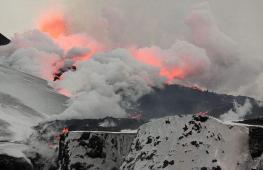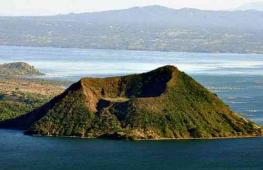The most ancient mountain on the planet. The oldest mountains in Russia are the Urals
What are the oldest mountains on planet Earth?
- There are mountains on all continents and many large islands in Greenland, Madagascar, Taiwan, New Zealand, British, etc. The mountains of Antarctica are largely buried under the ice sheet, but there are individual volcanic mountains, such as the Erebus volcano, and mountain ranges, including the mountains of Queen Maud Land and Mary Byrd Land are high and well-defined in relief. Australia has fewer mountains than any other mainland. In the North and South America, Europe, Asia and Africa are represented by the cordillera, mountain systems, ranges, mountain groups and single mountains. The Himalayas, located in the south of Central Asia, are the tallest and youngest mountain range in the world. The longest mountain system is the Andes in South America, stretching 7,560 km from Cape Horn to Caribbean... They are older than the Himalayas, and, apparently, had a more complex history of development. The mountains of Brazil are lower and much older than the Andes. V North America the mountains are very diverse in age, structure, structure, origin and degree of dissection. Laurentian Upland, occupying the territory from the lake. Upper to Nova Scotia, is a relic of highly eroded high mountains that formed in the Archean more than 570 million years ago. In many places, only the structural roots of these ancient mountains have survived. The Appalachians are intermediate in age. For the first time they experienced uplift in the Late Paleozoic c. 280 million years ago and were much higher than now. Then they underwent significant destruction, and in the Paleogene approx. 60 million years ago, they were re-raised to modern heights. The Sierra Nevada Mountains are younger than the Appalachians. They, too, have passed the stage of significant destruction and re-uplift. The Rocky Mountain system of the United States and Canada is younger than the Sierra Nevada, but older than the Himalayas. The Rocky Mountains formed in the Late Cretaceous and Paleogene. They experienced two major stages of uplift, the last one in the Pliocene, only 23 million years ago. It is unlikely that the Rocky Mountains have ever been higher than they are today. The Cascade Mountains and Ridges in the western US and b # 243; most of Alaska's mountains are younger than the Rocky Mountains. The coastal ranges of California are currently experiencing very slow uplift.
- the Ural mountains are the oldest in the world
- The most ancient mountains on Earth are the mountains of the Kola Peninsula ... In the ancient Indian legend "Mahabharata" there is a description of the ancestral home of the Aryans, where there was a high mountain Meru with main peak Mandara, above which was the North Star (Putorana plateau). In the cosmology of Ancient Iran, it was argued that at the creation of the World, Hara Berezaiti (Mount Meru) was created earlier. All other mountains in various parts of the world grew by means of e root system and were connected by underground roots with this pristine high Hara (Meru). The "Avesta" says that the first mountain that arose on Earth is the Great Khara. In the Zoroastrian teaching there is a story that sacred mountain has grown in three stages over 800 years. On the highest peak, shining with gold and gems, a palace was built for Mithra - the great Aryan God ... The indication of ancient sources that Mount Meru was located near the Northern Ocean, under the Pole Star, with a wealth of waterfalls, rivers, lakes, flora and fauna, birds, as well as the fact that the mountains are the most ancient on Earth, testify to the fact that that the abode of the Aryan gods was on the Putorana plateau in the region mountain peak height of 1700 meters, located east of the city of Norilsk and Lake Lama. This is confirmed by the fact that the Aryan peoples - the Arimasps - lived near Lake Lama and on the Putorana plateau before the new era. Numerous ground and underground structures are still found in these places today. Lake Lama has interesting stone formations, as well as underground labyrinths going east and north. There are assumptions that at different times there were capitals and cult centers of various peoples at Lake Lama, including the Aryans and Arismans (Arimasps). Cultural centers ancient peoples were at the rivers Yantali, Kochechum and in the bend of the Minchangda river under the thickness of the "cultural layer" of the earth.
About seven thousand years ago, under the pressure of the emerging cold weather, a significant part of the Aryans left in a southerly direction towards Altai, the Turgai plateau, and India. - Ararat
- If I am not mistaken, then according to the school curriculum it is Ural mountains... There are no sharp rocks, time destroyed them the most.
- Forgot what they call it, but you can google it. They are located exactly in South Africa.
- Why is it interesting for you?
- There are no ancient mountains on earth. they are all from the same time.
The oldest mountain on the planet located in the South Urals in Chelyabinsk region... More precisely, in the Kusinsky district, near the village of Aleksandrovka (6 km) and sad famous city Karabash. This is Karandash Mountain, or, more correctly, Kara-tash - Black Stone in translation from Turkic.
To the west is the Yurma ridge, to the south of the famous Taganay. Mount Pencil bulges out of the forest like a black rock, it is low compared to its neighbors, only 600 meters above sea level, but on the other hand it 4.2 billion years! This is the oldest geological age of our Earth.

Ordinary tourists rarely visit this inconspicuous mountain, but all the Ural geologists are well aware of it, and for them this is a place of pilgrimage. They just get high here, because Pencil Mountain is made up of a rock called izrandit... And there is no older breed on our Earth!

Photo mineral izrandite
This igneous rock erupted from the Earth's mantle and then solidified. The stone is heavy, extremely dense, durable, dark, almost black in color. Obviously, this is where the name Kara-tash comes from. There is a true version that the name "Pencil" is due to the fact that somewhere nearby graphite was mined - "pencil stone". But it’s not on the mountain itself, and you can’t carve anything out of the izrandite breed for sure. Geologists say that nothing can be chipped off.
In the photo there are happy geologists on the izrandite ledge.

The mountain is thus a unique geological object, it can be said to witness the formation of our planet.
In the vicinity of the mountain, the Izranda River begins, it is crossed by the Magnitka - Aleksandrovka highway. It is thanks to the river that this rare mineral got its name. And this happened relatively recently in 1964, when the geologist Ovchinnikov drew attention to the unusual black rocks exposed in the canyon dug by the river.

Photo exits of izrandite on the city of Karandash.
Lightning often strikes the mountain, so at the top of almost all larches the tops are beaten off.
We were there in January 2009, when we went to Yurma. But I found out all this information only now. And then we naively thought it was Pencil, because the graphite was mined there somewhere in the quarry. The author of all winter photos is Vlad Kochurin.




High view of antiquity.
The Ural Mountains are the oldest mountain formations on Earth. Formation began in the late Devonian - more than 364 million years ago. It ended in the Triassic period - after 135 million years. The system includes the unique Karandash mountain (Turkic Kara-tash), which is 4.2 billion years old - 400 million years younger than the Earth. It consists of igneous rock with a minimum content of organic compounds called Izrandite.
The first mention refers to the 7th century BC - Herodotus tells about the poem "Arimaspey" by Aristeus of Prokonese. For the first time the mountains of the Urals were depicted by Claudius Ptolemy (II century AD). The Arab geographer al-Idrisi gave more detailed description in his work of the XII century. A Russian mention can be found in the "Tale of Bygone Years" (XI century AD). The current name was given to them by the Russian geographer Vasily Tatishchev in the 18th century, separating them from the ancient designations: Hyperborean and Riphean. In the Tatar language “Ural” means “stone belt”.
The bizarre system of the Urals mountains stretches from south to north for more than 2500 kilometers (mostly along the 60th meridian). It lies among the West Siberian and East European plains, spreading up to 160 km in width. It is the natural border between Europe and Asia. In the south, the mountains expand, deviating to the southwest, in the north, they bend towards the Yamal Peninsula.
In antiquity, geographers distinguished the Southern (Noros), Middle (Rimnus) and Northern (Hyperborean) sections of the Urals. Nowadays, a conditional division into 5 regions has been adopted: South, Middle, North, Subpolar, Polar.
The appearance of the Ural Mountains is not the same everywhere.
In the north: thin ridges, rocky peaks and glaciers.
In the foothills, there are herds of deer.
The Middle Ural is the lowest part. Time has turned it almost into a plain, on which the remnants of destroyed mountains rise - remnants.
In the south, the mountains rise again. Here rivers flow in bottomless gorges, there are many lakes.
In mountain forests of medium and southern Urals many different animals. The Ural Mountains are rich in minerals (48 items) and minerals (200). There are non-ferrous and iron ores, salts, coal, precious metals. There are abundant deposits of skarn-magnetite ores, nickel oxide, copper pyrite, chromite, gold and platinum, bauxite and asbestos. In the St. Petersburg Hermitage there are bowls made of Ural jasper and malachite. It is difficult to list all the fossils in the bowels of the Urals.
In 2001, Canadian scientists attempted to challenge the age-dominance of Mount Pencil. The age of the Nuvvuagittuk rocks, located near the Eskimo village of the same name, was named - 4.3 billion years. Disputes continue to this day, leaving the palm behind the Urals.




October 24, 2013
The mountain is 4.3 billion years old
Many people in the world of science claim that the oldest mountain is located in the modern territory of Canada, where a rock formation was discovered, the approximate age of which is estimated at 4.3 billion years.
To understand how old this mountain is, it is worth remembering the fact that planet Earth is approximately 4.6 billion years old. That is, in fact, the oldest mountain is the same age as our planet. This Canadian mountain system called Nuvvuagittuq. Nuvvuagittuk is not just a system of mountains, but a real greenstone belt. Interestingly, this old rock formation was discovered by scientists not so long ago - in 2004.
Mountains in the vicinity of Hudson Bay
Tourists who would like to see this wonderful natural phenomenon will certainly be useful information that the oldest mountains are located in the vicinity of Hudson Bay - in the Canadian province of Quebec. This discovery of world scientists, published almost 10 years ago in the journal Science, is several hundred million years older than the earth's known rocks in the past.

Previously, the oldest scientists considered rocks called gneisses, which, by the way, are also found on Canadian soil, and their age is about 4 billion years. How exactly was the "oldest mountain" discovered, and how were scientists able to accurately calculate its age?
Geologists from leading Canadian and American Universities and Institutes have explored the Nuvvuagituk mountain system, a few tens of kilometers from which, by the way, there is an Eskimo settlement. Back in 2001, it became clear to geologists that the age of the rocks here is very significant, but it was not immediately possible to determine the exact "date of birth" of these mountains. The radioisotope method helped to establish this fact, the essence of which is to measure the amount of radioactive elements. It has been proven that these mountains are indeed the remnants of the earth's crust, which separated from the Earth's mantle after its birth. Thus, geologists and other world scientists received new important information for investigating mysterious questions - how exactly and as a result of which life appeared on Earth, what was the atmosphere here, and when it happened.
Mountain Pencil
The next contender for the title of "the oldest mountain" on our planet is located on the territory of our Motherland. The age of the mountain named Pencil, which is part of the Ural mountain system, as well as the age of the Canadian record mountain exceeds 4 billion years. Pencil is located in the South Urals, its height is about 600 meters, and from its top you can see the nearby mountains and ridges. The name "Pencil" does not mean at all what many most likely thought. This toponym comes from the word Kara-Tash of Turkic origin and is translated as "black stone".

One of the oldest mountains really consists of black stone - or rather, the mineral izrandite. This black mineral is part of the earth's mantle and very rarely "comes out" outside. It is surprising that this mountain with a multi-billion dollar history was not destroyed by winds and waters, but remained intact to this day. How did it happen that Mount Karandash, located in the southern Urals, is older than this mountain system itself?
Ural mountains
The explanation is very simple. The Ural Mountains were formed after the interaction of the European and Asian plates. The Asian plate, figuratively speaking, “crawled” onto the European plate, moving towards Europe for a long time. This is how the Ural Mountains were formed, which are folded. And Mount Pencil has a completely different nature and origin, as it consists of the mineral izrandite, formed from the Earth's mantle after its appearance.
As you can see, it is very interesting to dive into the depths of the story. And it is even more interesting to see with your own eyes such natural wonders as Mount Pencil and the Nuvvuagittuku mountain system, which are the same age as our planet.
Where there are now stable platforms, the elements previously raged: rose along faults from the depths of magma, lava flows erupted, and layers repeatedly crumpled into folds... Towered and destroyed again high mountains... This continued for billions of years, until the earth's crust here became so rigid and indestructible as a result of its melting by granites and other igneous rocks that it no longer reacted to tectonic forces. It was already a stable block! But old mountains collapsed, and time did not spare them, old age came, which even the stone giants did not avoid.
Destruction of mountain ranges and old mountains
Millions of years spent destructive work water flows, wind, temperature drops before they were "cut off" mountain ranges and no plains arose in their place. And then the ex mountainous area experienced only smooth dives and small uplifts. When submerged, waters from the ocean or neighboring still living and mobile zones - geosynclines - entered it, and small vast seas arose. Limestones and detrital rocks were deposited in them (with repeated washing of fragments of the once destroyed mountains). From these new layers, a platform cover arose, composed of horizontal layers of now slightly altered rocks.

The stable ancient rigid blocks lay calmly, and the bedding of the platform cover covering them was not disturbed either. But this is also for the time being. There have been cases of revival of tectonic movements along faults, and then during the processes of resumption of movements (activation) the old mountains were gaining a second youth.
From under the cover, the oldest historical strata on the platforms emerge in raised blocks - shields... Studying the most ancient rocks at these outcrops, geologists get an idea of the processes of the distant past, great perturbations and "revolutions" that took place here many times from the earliest stages of the geological history of the Earth.
Destruction old mountains seen in Aravallian mountains of northwestern India... The sun-scorched hills vividly resemble the foothills of the sultry Central Asia... Billions of years ago there were mountains as high as they are now Himalayas.
The emergence of young mountains
TO young mountains that have arisen on the site of mobile zones - geosynclines, include peaks of vietnam with their steep steep slopes, where in the gorges the lush vegetation of the tropical jungle clings to the rocks, the huge ridges of the North American Cordillera and Rocky Mountains, Supreme Stan ridge of the south Of the Far East ... Young ridges, rising like steep steps above flat platform plains, are in stark contrast to old gently sloping mountains like Ural.
What forces lifted these great mountain structures and brought the deep bowels of the Earth to the surface?

The reasons for such processes are being studied theoretical tectonics... She also owns the honor of dealing with the origin and deep structure of the Earth.



